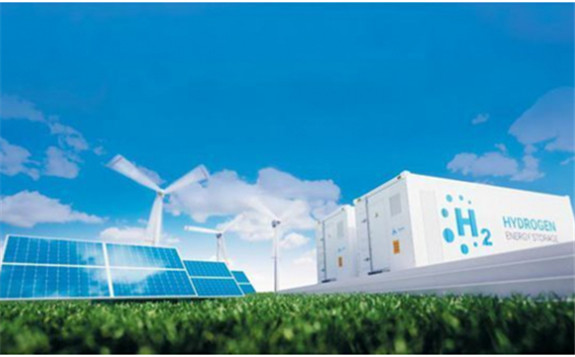The South Korean government has decided to turn hydrogen into South Korea’s biggest energy source by 2050. To this end, it will expand hydrogen-based power generation while increasing the supply of clean hydrogen, replace 100 percent of fuels in the steel and chemical industries with hydrogen, increase the capacity of hydrogen vehicle production, and install more than 2,000 hydrogen chargers nationwide.

The new plan of the government consists of 15 projects for more clean hydrogen production, infrastructure expansion, more hydrogen utilization in daily living, and industrial ecosystem enrichment.
Specifically, it is planning to supply 27.9 million tons of hydrogen in 2050 and it will be green hydrogen and blue hydrogen. Depending on the production method, hydrogen is divided into green hydrogen based on renewable energy, blue hydrogen based on natural gas extraction and carbon collection, and grey hydrogen based on natural gas extraction. Green hydrogen and blue hydrogen are classified as clean hydrogen.
A number of green hydrogen production facilities will be built for production cost reduction. According to the plan, 250,000 tons will be produced and the cost per kilogram will be lowered to 3,500 won in 2030 and the amount and the cost will be raised to three million tons and lowered to 2,500 won in 2050, respectively. At the same time, carbon storages for at least 900 million tons will be built by 2030 and the volume of annual blue hydrogen production will be increased to 750,000 tons and two million tons by 2030 and 2050, respectively.
The government is going to work more closely with hydrogen-producing countries so that hydrogen import can be stable. It is going to launch renewable energy and hydrogen production projects abroad and increase the number of its hydrogen supply chains to at least 40 by 2050.
Hydrogen ports will be built near coal and LNG power plants and industrial complexes and incentives will be provided so that more hydrogen-based ships, vehicles and equipment can be in operation. Hydrogen pipelines will be built at major hydrogen production and import sites and the government is considering using existing natural gas pipelines for hydrogen transport as well.
When it comes to hydrogen-based power generation, mixed combustion will be expanded and new gas turbines will be commercialized so that the amount of that type of power generation can be boosted from 3.5 TWh to 287.9 TWh from 2020 to 2050.
The annual capacity of hydrogen vehicle production will be increased to 5.26 million units by 2050 and hydrogen will be applied to various means of transport, including ships, drones and trams. Fuel cost and purchase subsidies for commercial hydrogen vehicles will be improved at the same time.
According to the plan, the Ministry of Environment will build at least one hydrogen charging station in each of 226 cities, counties and districts by 2025 and enable hydrogen charging station access within 15 minutes nationwide in 2040.
The Ministry of Oceans and Fisheries will build 14 hydrogen ports by 2040 so that marine green hydrogen can account for 10 percent of the domestic green hydrogen supply. The Ministry of SMEs and Startups will run regulation-free zones for hydrogen technology development and demonstration.
“According to the plan, hydrogen will account for 33 percent and 23.8 percent of South Korea’s energy consumption and power generation in 2050, respectively,” the government said, adding, “Then, hydrogen will become its biggest energy source by beating petroleum and the economic effects of this include 567,000 new jobs and at least 200 million tons of greenhouse gas reduction.”